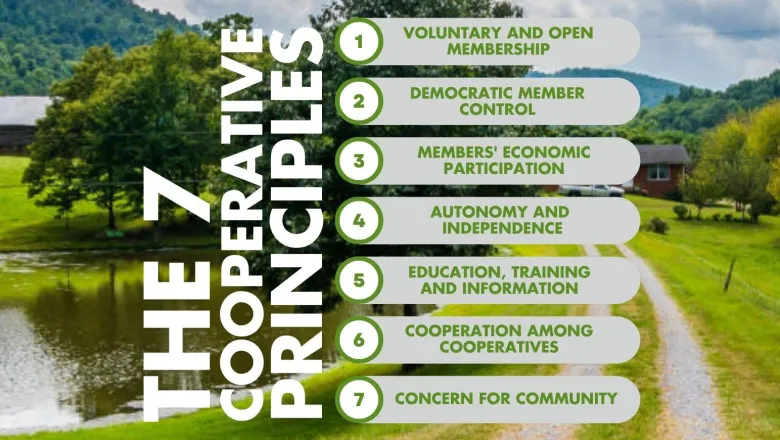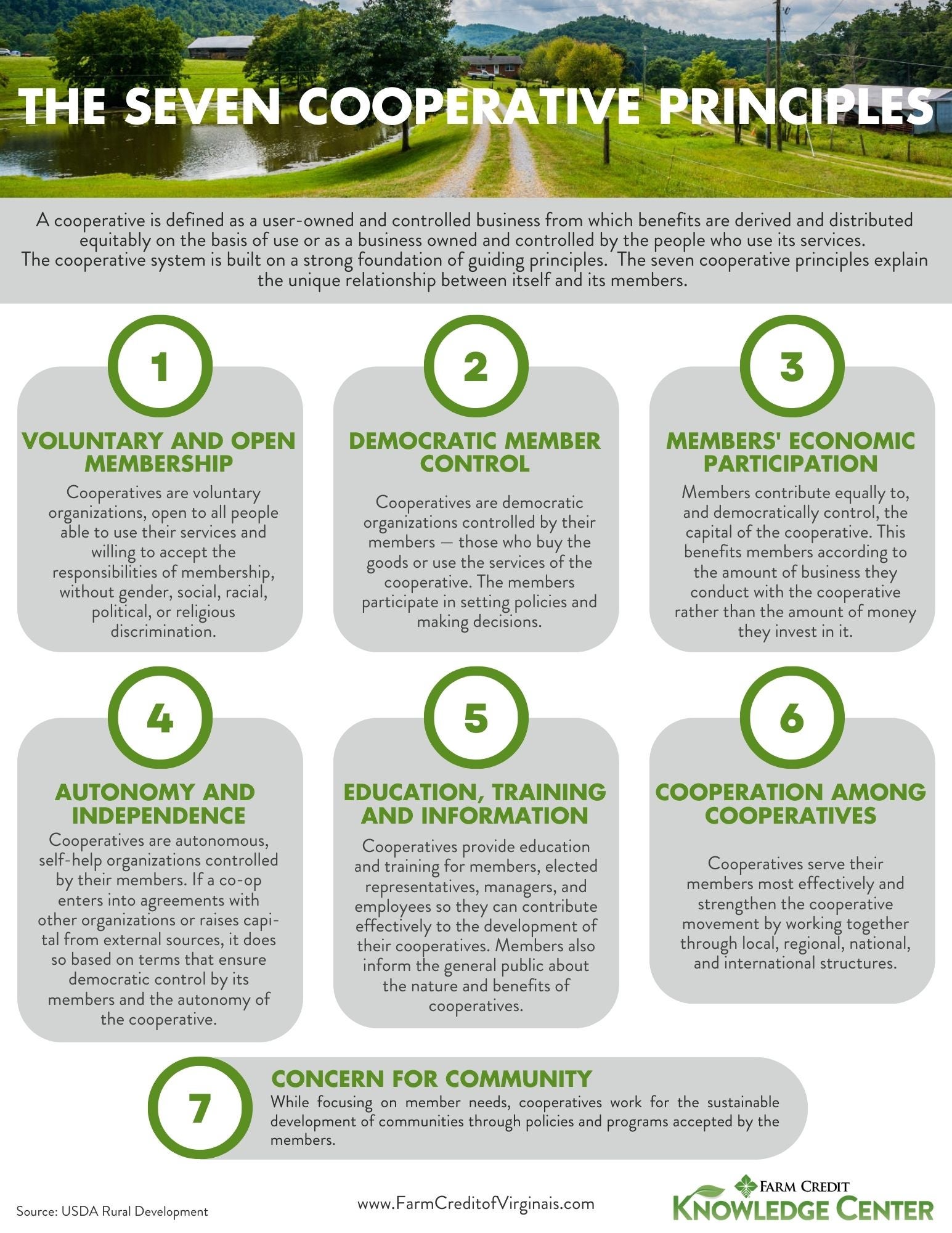What is a Cooperative?

Other
What is a cooperative?
Cooperatives are user- and producer-owned businesses owned and controlled by their members. It's a business model working on behalf of the members instead of outside investors. Cooperatives are democratically controlled businesses that work to meet their members' social, economic, and/or cultural needs. The members use the products, supplies and services of the cooperative, and profits are usually given back to its members (patronage).
Cooperatives are created for many reasons or to fulfill specific needs common to a group of people. Some examples are the split cost of goods, shared control over work, and increased purchasing power by buying in bulk, shared wages, etc.
What are some different types of cooperatives? (USDA)
Farmer-owned – help producer-members market and process their crops and livestock and secure needed production supplies and services.
Consumer-owned rural utility co-ops provide electrical power and telecommunications services.
Financial co-ops provide credit and financial services.
What are the seven cooperative principles?
Principles were developed to distinguish a cooperative from other kinds of businesses. The seven cooperative principles encompass best practices and policies and are widely utilized.
Click HERE for the pdf version of the infographic.

- Voluntary and Open Membership
Cooperatives are voluntary organizations, open to all people able to use their services and willing to accept the responsibilities of membership, without gender, social, racial, political or religious discrimination.
- Democratic Member Control
Cooperatives are democratic organizations controlled by their members – those who buy the goods or use the services of the cooperative – who actively participate in setting policies and making decisions.
- Member Economic Participation
Members contribute equally to, and democratically control, the capital of the cooperative. This benefits members in proportion to the business they conduct with the cooperative rather than on the capital invested.
- Autonomy and Independence
Cooperatives are autonomous, self-help organizations controlled by their members. If the co-op enters into an agreement with other organizations or raises capital from external sources, it is done so based on terms that ensure democratic control by the members and maintains the cooperative's autonomy.
- Education, Training and Information
Cooperatives provide education and training for members, elected representatives, managers and employees so they can contribute effectively to the development of their cooperative. Members also inform the general public about the nature and benefits of cooperatives.
- Cooperation among Cooperatives
Cooperatives serve their members most effectively and strengthen the cooperative movement by working together through local, national, regional and international structures.
- Concern for Community
While focusing on member needs, cooperatives work for the sustainable development of communities through policies and programs accepted by the members.
Additional information: https://www.usda.gov/topics/rural/co-ops-key-part-fabric-rural-america
Learn more about how Farm Credit of the Virginias, ACA is part of a nationwide network of cooperative lending institutions.
To learn about the Farm Credit Administration, visit https://www.fca.gov/bank-oversight/the-cooperative-way
To learn about the Farm Credit’s cooperative structure visit, https://farmcredit.com/our-structure
Watch a short video: Cooperative Structure Unique Funding Model, Farm Credit